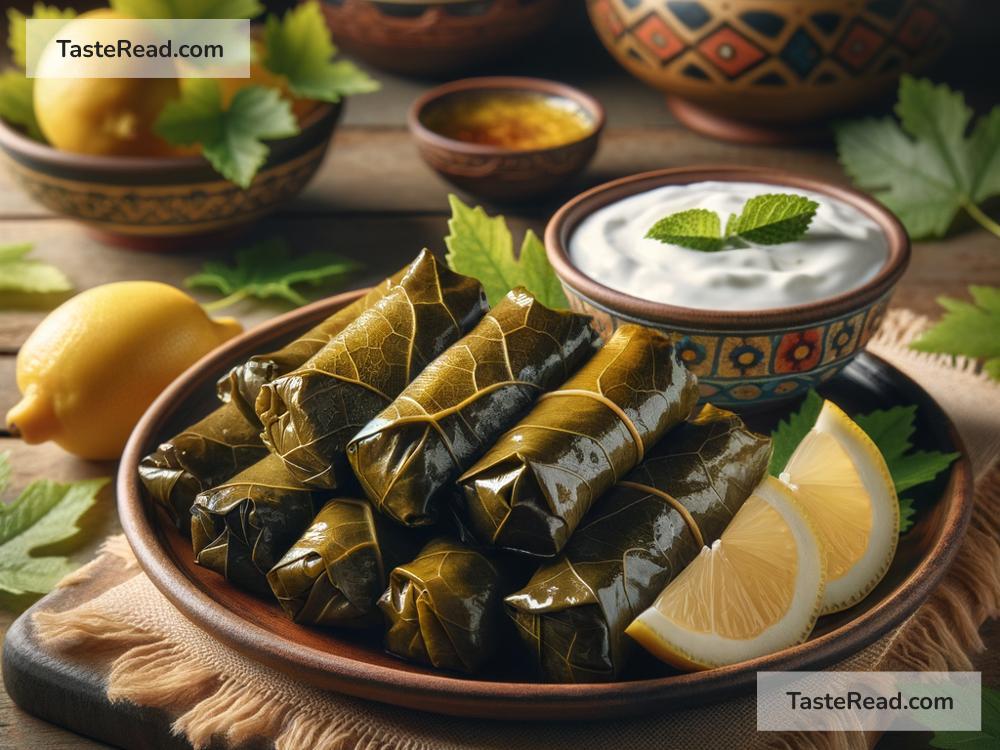The Cultural Significance of Middle Eastern Stuffed Grape Leaves
The Middle East is home to rich traditions, vibrant history, and flavorful foods that reflect its deep-rooted culture. One dish that truly embodies the region’s culinary heritage is stuffed grape leaves, known by different names across the region, such as dolma in Turkey, warak enab in Arabic-speaking countries, and yaprak in parts of the Mediterranean. This iconic dish carries much more than its delicious taste; it’s a symbol of family, hospitality, history, and cultural unity. Let’s explore why stuffed grape leaves are so significant in Middle Eastern culture.
What Are Stuffed Grape Leaves?
If you’ve never tried stuffed grape leaves, imagine tender, leafy greens wrapped around a flavorful filling such as rice, herbs, spices, and sometimes meat. The filling is seasoned generously with ingredients like cinnamon, mint, lemon juice, olive oil, and pine nuts, creating a perfect balance between tangy and savory flavors. Once rolled into small bundles, the grape leaves are simmered to perfection, resulting in soft, aromatic bites that are as comforting as they are satisfying.
Stuffed grape leaves can be served warm or cold, and they are often seen as a key part of mezze, a collection of small dishes shared by friends and family. Mezze is not just a snack or an appetizer—it’s an experience of bonding and communal eating, making stuffed grape leaves central to Middle Eastern hospitality.
A Link to Cultural History
Stuffed grape leaves have a long and fascinating history. Their origins are believed to date back thousands of years, with ancient peoples in the Middle East and Mediterranean regions using grape leaves to preserve food before refrigeration existed. Over time, rolling grape leaves around fillings became a culinary art form, especially in the Ottoman Empire, which ruled much of the region from the 15th to the early 20th century. The Ottomans helped spread the dish to surrounding countries, each of which adapted the recipe to fit local flavors and traditions. Today, stuffed grape leaves are prepared differently in countries like Lebanon, Syria, Greece, Turkey, and Armenia, but the essence remains the same: a heartfelt dish rooted in history.
Symbol of Family and Tradition
In the Middle East, food is much more than fuel or nourishment—it’s a way of connecting people. Preparing stuffed grape leaves is a communal activity that often brings together multiple generations of a family. Rolling the leaves requires patience and precision, making it a task that’s often shared among siblings, children, parents, and grandparents. Stories are told, advice is shared, and laughter fills the room as hands carefully fold grape leaves around flavorful fillings. As a result, the dish is not just about the physical nourishment; it’s about the emotional and cultural ties strengthened through the act of cooking and eating together.
Many families have their own recipes, passed down through generations, giving stuffed grape leaves a personal and intimate touch. Some families might prefer a vegetarian filling with rice, while others include lamb or beef. The shared experience of preparing and enjoying stuffed grape leaves helps keep family bonds alive and maintains cultural traditions in a changing world.
Hospitality and Generosity
Middle Eastern culture is known for its emphasis on hospitality and generosity, and stuffed grape leaves play a key role in this. When guests arrive, they are often treated to a table full of delicious dishes, with stuffed grape leaves taking center stage. Serving them to visitors shows care and welcomes them into the home in a warm, inviting way.
Offering stuffed grape leaves symbolizes abundance—every small roll represents the effort and thoughtfulness put into the meal. In Middle Eastern households, guests are often encouraged to eat as much as possible since refusing food might appear impolite. The stuffed grape leaves, with their satisfying textures and flavors, make it easier for visitors to indulge.
A Dish of Unity
Though the recipes and names may change slightly from country to country, stuffed grape leaves connect people across cultures and borders. The dish represents a shared culinary heritage among Middle Easterners and Mediterranean communities—even as far as the Balkans. At its core, stuffed grape leaves remind us that food can be a unifying force, bringing people together despite their differences.
This is especially meaningful in the Middle East, where political conflicts and borders might divide people. The enjoyment and sharing of stuffed grape leaves serve as a reminder of the common experiences and traditions that unite everyone, regardless of nationality, religion, or ethnicity.
More Than Just Food
Stuffed grape leaves are a testament to the Middle East’s deep cultural ties to food. They reflect history, tradition, and a sense of togetherness—all rolled into one dish. Whether enjoyed at a family dinner, served to guests at a celebration, or shared at a café during mezze, stuffed grape leaves embody the love, care, and warmth that Middle Eastern cuisine is known for.
So, the next time you bite into a stuffed grape leaf, think about the generations of people who perfected this dish, shared it with loved ones, and passed it on as a symbol of cultural pride. It’s more than just food—it’s a way to connect to a rich and beautiful heritage, one leaf at a time.


